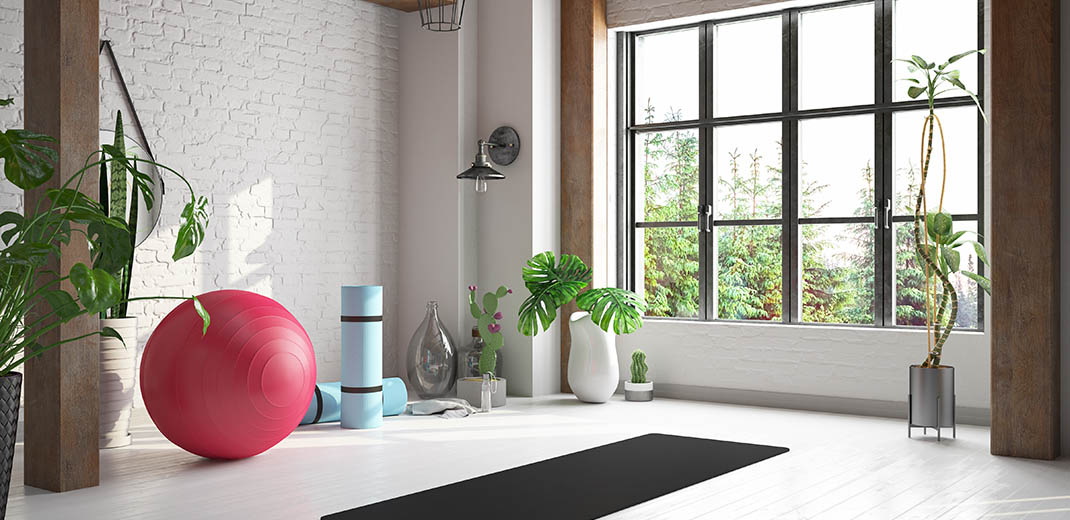Welcome to wellness
Offering amenities geared toward health and happiness

Personal wellness has been a hot topic for years. Now, wellness is an area of opportunity for property managers looking to enhance the offerings in their commercial or residential spaces. Instituting or expanding building amenities with a focus on health and wellness can be very attractive for both residential and commercial tenants and can help justify higher rents.

Fernando Bastos, ARM®, Keola La’i
While many properties have long incorporated workout facilities in their spaces, others are finding creative new ways to think about and prioritize wellness. In fact, several organizations offer wellness certifications that provide guidance on what kinds of features are useful and appropriate for a given space.
Some wellness applications, such as filters that can reduce the spread of airborne particles, were spurred by COVID protocols. Fernando Bastos, ARM®, general manager of the Keola La’i condominium tower in Honolulu, Hawaii, discussed how his team implemented a safety program for their building. “For me, the basic foundation for wellness is health. We were the first condominium in Hawaii to achieve the GBAC STAR accreditation,” which is awarded to facilities that have established procedures and systems that can respond to and recover from disease outbreaks. “COVID represented a paradigm shift,” continues Bastos. “We moved from cleaning for aesthetics to cleaning for health.”
Bastos oversaw the installation of Schindler CleanAir Ion systems explicitly designed for elevators. Each unit circulates charged ions in the elevator cab to inhibit airborne pathogens. “I did everything I could to minimize airborne transmission of COVID, flu, and colds.” It was also important to make residents aware of the systems. “You put everybody at ease when they know that we’re following the strict third-party guidelines and certifications,” Bastos says.
A softer side to wellness
Of course, there’s more to wellness than germ control. Bastos shares that, as a mixed-use condo, the Keola La’i can offer its residents wellness services through special reduced-rate relationships with its business tenants, such as the holistic healing center MOA Hawaii and other businesses in the immediate vicinity. “Our building is located in one of Honolulu’s hippest neighborhoods, Kaka’ako. Within a three-block walk, we have a cross-fitness center. We also have another partnership at a place called the Still and Moving Center that offers dance, yoga, tai chi, and meditation.”
Residents are informed of these unique “extension amenities,” as Bastos calls them, when they receive their welcome packet upon the home purchase. Occasionally, Bastos posts flyers on the recreation deck to remind residents of the deals they can use or to announce new programs in the area.
Bastos takes advantage of some of the classes available in the area and insists that his staff members take a daily 15-minute sunlight break. “I like them to get a little bit of vitamin D every day,” he says.
Power of attraction
Property managers of commercial spaces can also bring in amenities or point out physical improvements to appeal to prospective tenants. For example, tenants looking for ways to attract employees to their offices might be especially receptive to hearing about the building’s IREM Certified Sustainable Property (CSP), LEED status, or wellness certifications, such as WELL Building Standard or Fitwel. (See sidebar for more information.)

Deborah Webb, CPM®, Webb Property Services
Deborah Webb, CPM®, of Webb Property Services in Washington, D.C., sees wellness amenities as a boon to tenant employers. “The tenants are looking for ways to attract talent, and usually that’s a younger generation,” she says. “They can attract top-tier talent by describing what the building does and what we have to offer. Features like that—plus the building’s alignment with sustainability goals—matter to the younger generation.”
The Fitwel certification touches on many points that appeal to tenants and employees, from food to exercise to intellectual pursuits, says Webb. “With diabetes and heart problems in our society, we need to do something while people are at work to the extent possible. Fitwel creates ways to activate the building; for example, you could have healthy food options delivered to your building. Encourage people to take the stairs by activating them with signage that lets them know how many steps are taken. You might put artwork there or music. Instead of just regular water fountains, you could install fountains that allow you to fill up your water bottle.”
The other advantage of Fitwel, Webb explains, is that it is not very expensive for building owners compared to other certification requirements. “Fitwell doesn’t necessarily require the use of a lot of interior spaces,” she says. “It could be your walk score—how close you are to a library, farmer’s market, or something like that.” Property managers can use existing features, such as stairs, fitness centers, or multipurpose rooms with Fitwel, or add amenities that might help with mental health.
Webb describes some “out-of-the-box ideas” to counteract vacancies and entice workers to return to the office. “[Property owners] are having to increase the types of amenities, especially if there’s a lot of vacancy,” Webb says. “They could be anything from letting pets come to work one day a week, having a pickleball court on one floor, bringing in a chef to prepare a healthy lunch one tenant at a time, or doing a happy hour on a rooftop where people can be outside and mingle.”
Landlords and employers can form partnerships to make healthier workplaces by offering lectures on nutrition, bringing in a nurse or doctor to do employee health screenings, or having personal trainers in the building—which in turn might lower health insurance costs.
Supporting moms

Abbey Donnell, Work & Mother
One employee group that needs a dedicated amenity space is nursing mothers. Abbey Donnell, CEO of Work & Mother, has launched a business dedicated to providing spaces for lactating moms to pump breast milk comfortably while at work. “Work & Mother started because I witnessed so many working mothers struggling with returning to work because of the lack of proper spaces and resources,” says Donnell. “These people work at all sorts of companies, in all sorts of office spaces. Some had no accommodations at all, while others had multipurpose wellness rooms, but they were either constantly in use for various things, or they weren’t very private.”
Before she had children, Donnell imagined what it would be like to pump in the kinds of open-plan workspaces where she worked. She realized that it would be much more efficient for multiple employers to be able to use a dedicated lactation space instead of having to fit out dozens of individual “closets.”
“I knew it would be more efficient to have an outsourced, shared-space approach, and in doing that, offer a much higher-caliber solution,” Donnell says. “We launched in 2018 as shared spaces fully equipped with pumps. We provide cleaning and sanitizing stations; hospital-grade pumps; accessories, such as milk storage bags; and refrigerated storage. We conduct communication and awareness services on behalf of the landlord and provide all the HR documents for tenants, including their lactation accommodation policy for their handbook, materials for their recruiting, and welcome packages. And then we interact with moms to guide them through the process to make sure their needs are met and questions answered.”

A dedicated pumping space for new moms, complete with cleaning and sanitizing stations.
Work & Mother has multiple locations in several major cities. Some locations are inside office buildings, while others serve multiple buildings in a campus-like setting. The endeavor has been so well-received that Donnell is launching a related amenities service called Work & Wellbeing that will accommodate employees who want private space for prayer, meditation, or telehealth visits.
This kind of personalized amenity space may be an unexpected resource for properties with underutilized space, as well as for the people fortunate enough to be in the area. As Donnell says, “We can take care of all the employees in the building and make sure they have safe places to carry out these vital, everyday tasks.”
- WELL Building Standard. The International WELL Building Institute promotes its system for implementing “a holistic approach to health in the built environment, addressing behavior, operations and design,” which can be utilized with new construction or existing buildings. Applicants must meet more than 100 criteria that “impact the health, comfort, or knowledge of occupants.”
- Fitwel. Developed by the Centers for Disease Control and Prevention (CDC) and the U.S. General Services Administration (GSA), this leading certification system has been implemented in more than 23 million buildings, affecting 154 million employees or residents. More than 7,000 research studies into environmental health, facility management, and design provide the foundation for this certification.
- IREM Certified Sustainable Property (CSP). The IREM CSP program for existing office, medical office, multifamily, retail, senior housing, industrial, and self-storage properties “recognizes excellence in property operations and performance based on aspects like energy, water, health, recycling, and procurement” and incorporates best practices and amenities related to health and wellness. In addition to elevating the property and increasing its appeal to tenants and residents, the CSP recognition enhances owner reporting on environmental, social, and governance (ESG) for investors and boards of directors. Learn more about CSP certification at irem.org/certifications/for-properties/irem-certified-sustainable-property.
Similar Posts
Features
Robotics revolution
Tapping into this innovative technology can enhance efficiency, reduce costs,...




